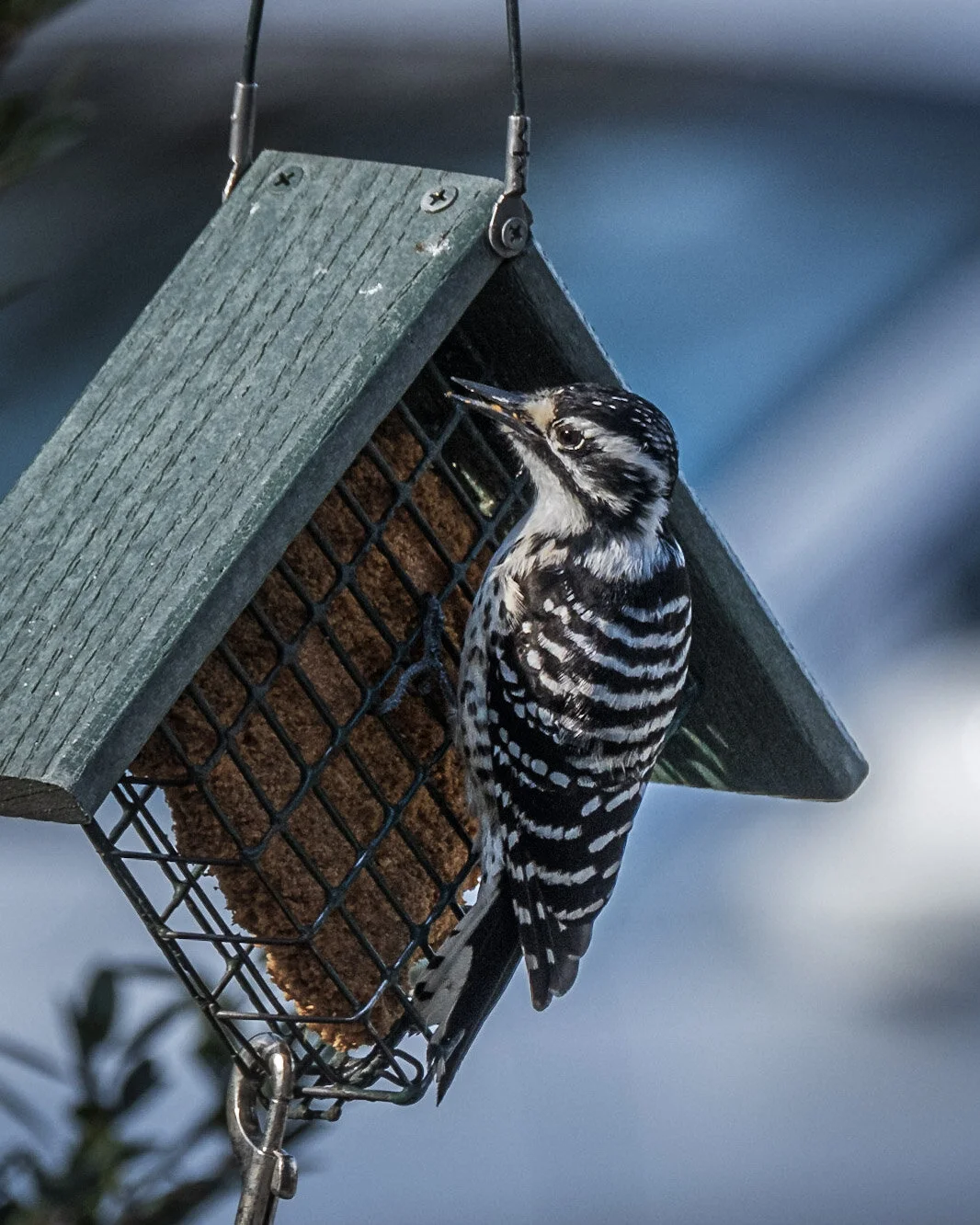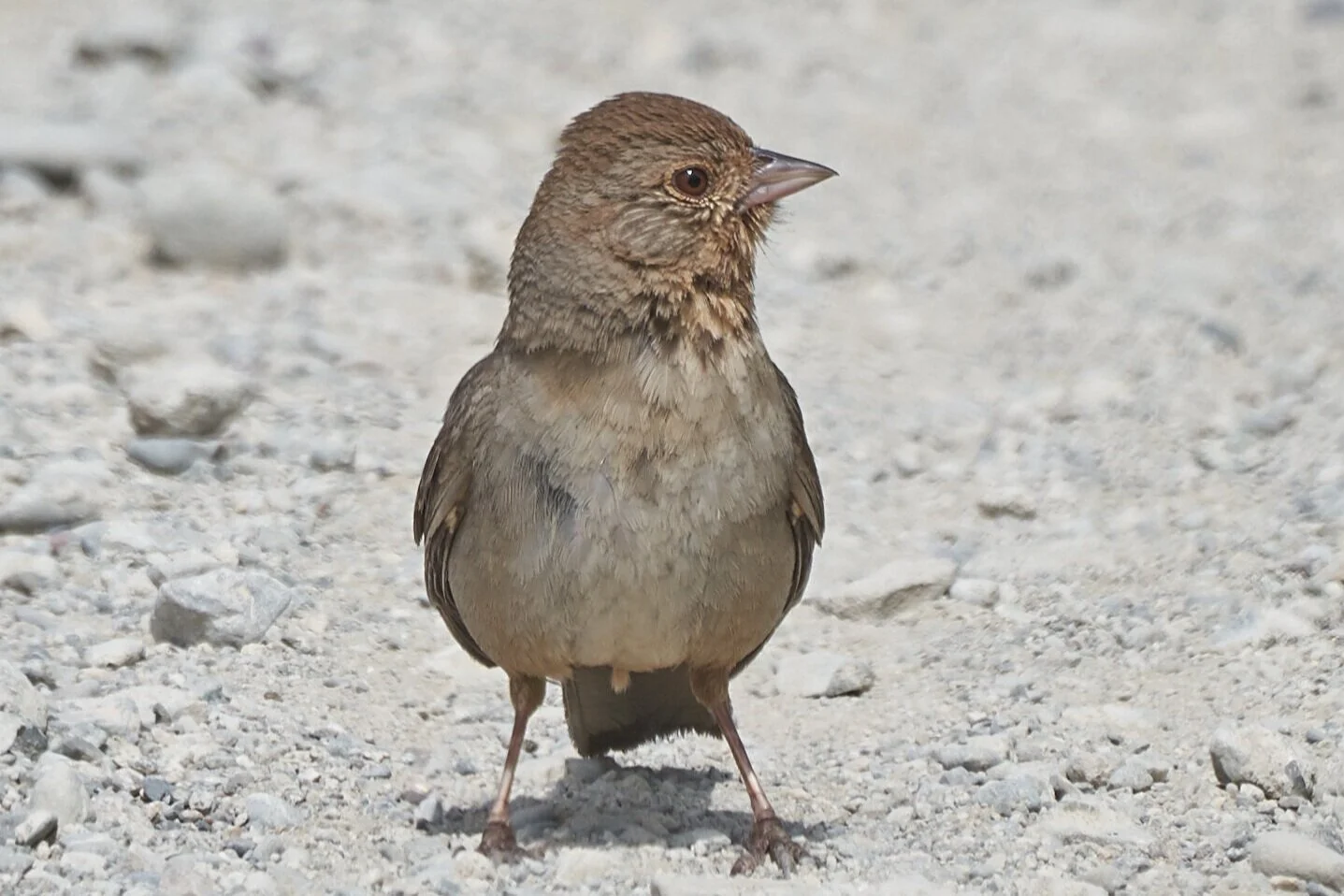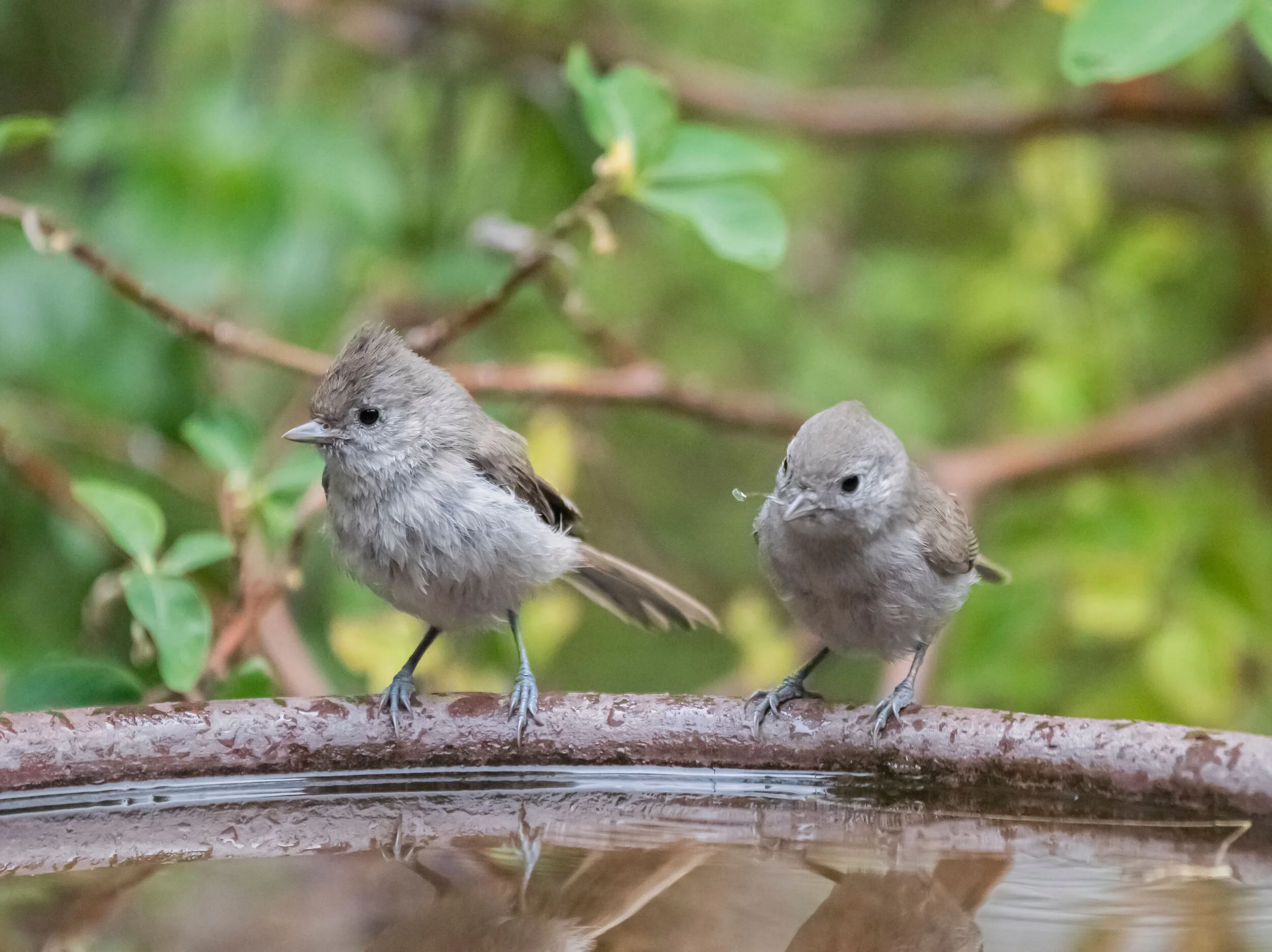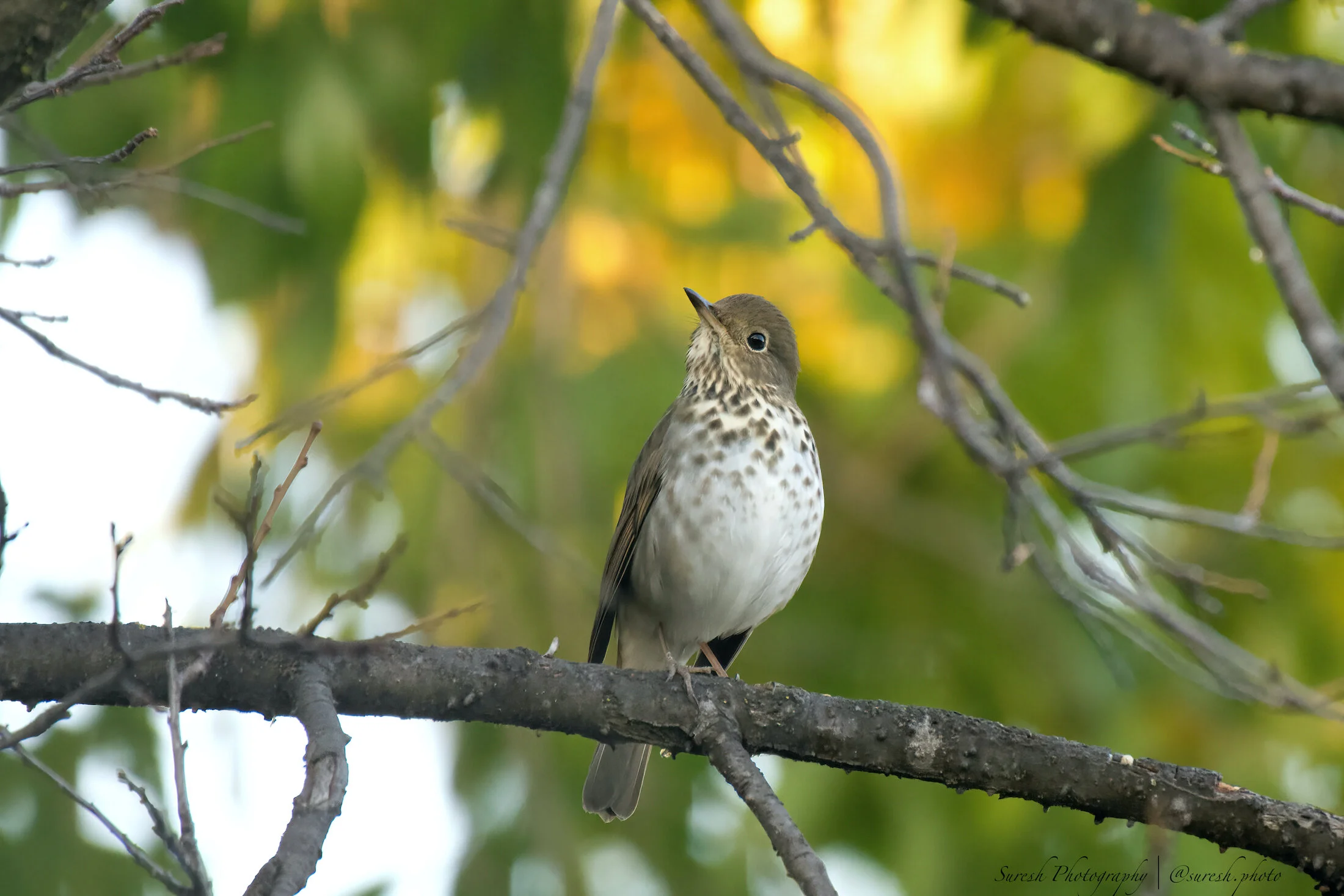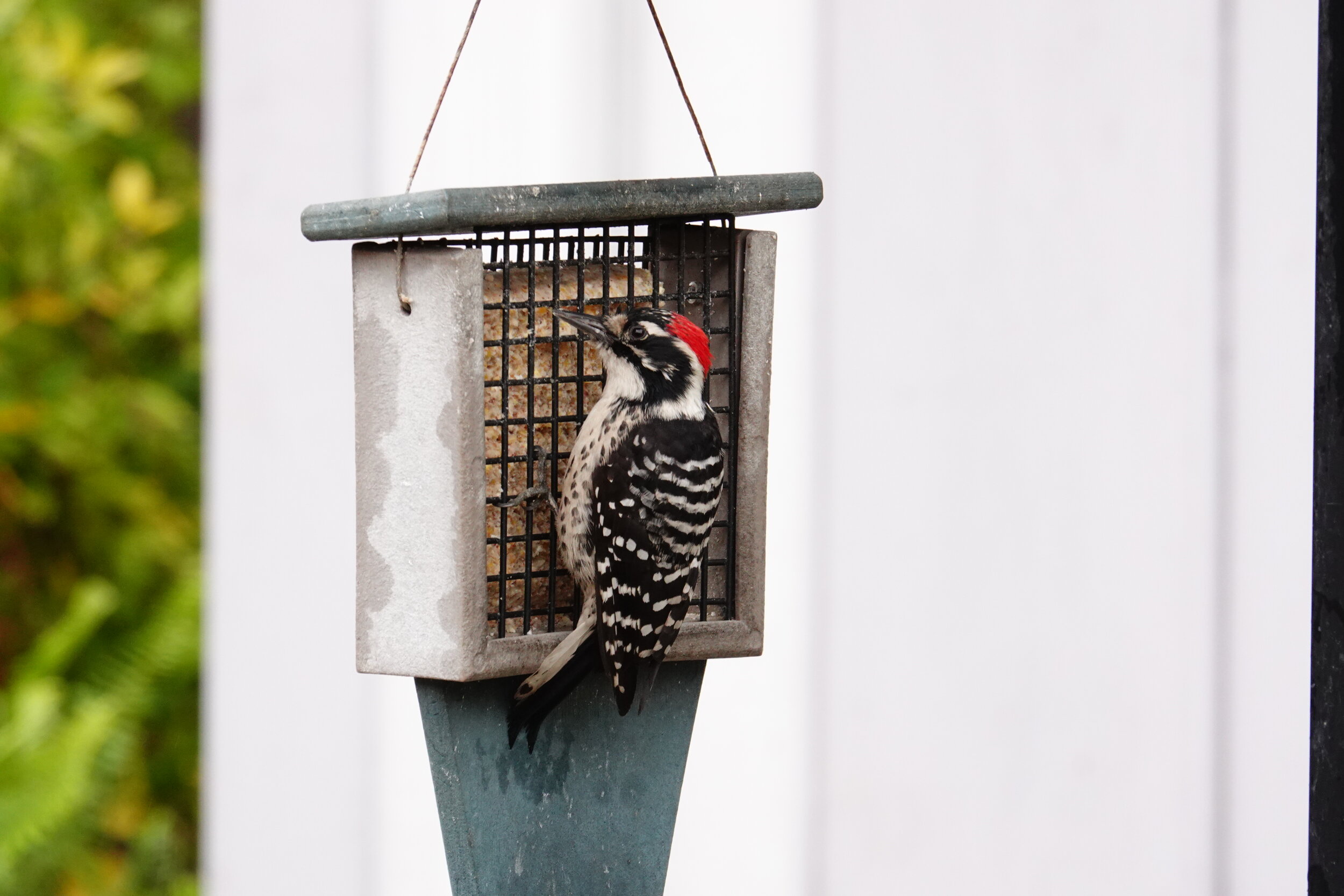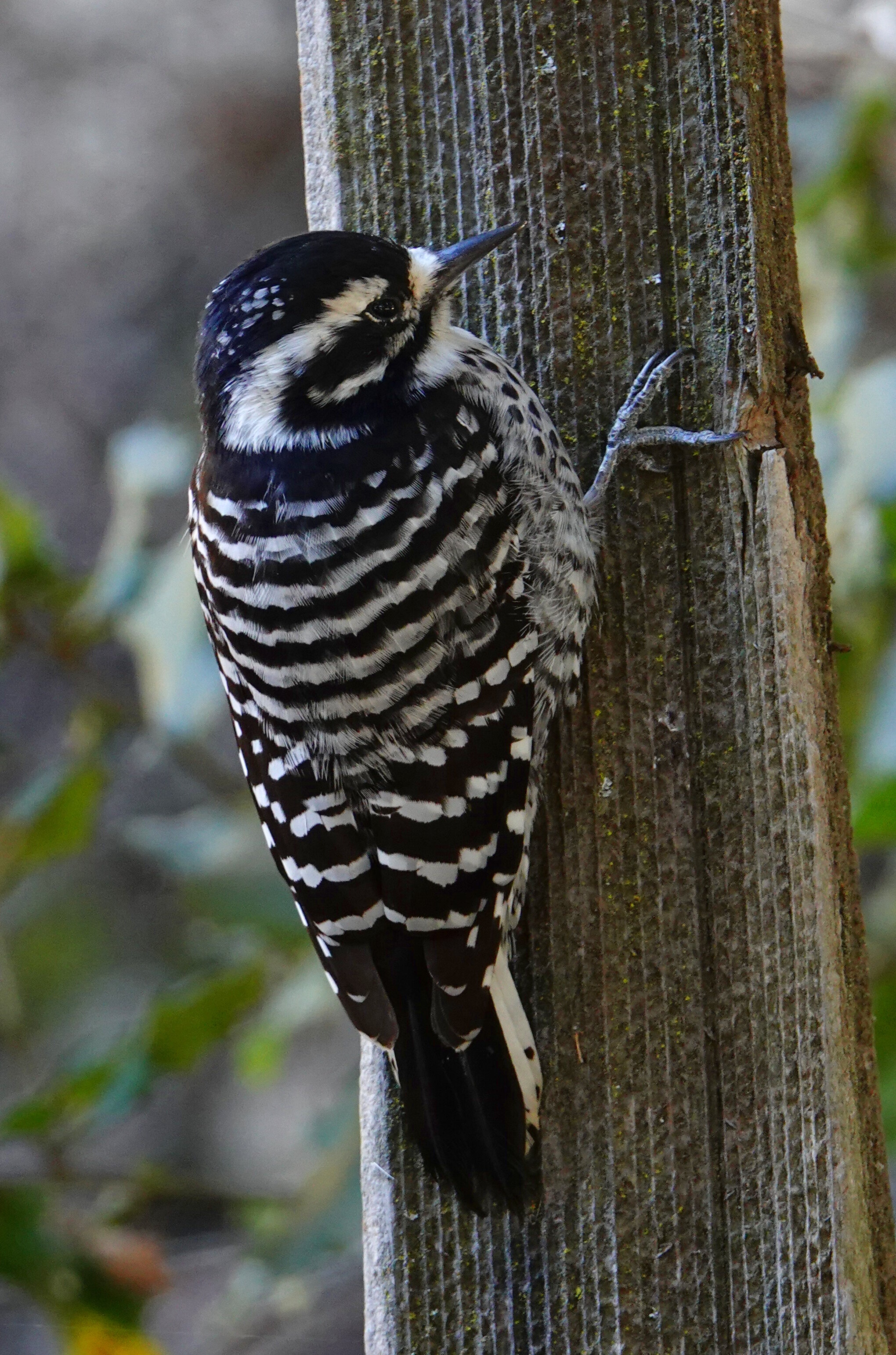Nesting hummingbirds, baby titmice, hungry waxwings, and more! Find out what birds our members and friends have seen lately in their yards and neighborhoods.
Hooded Oriole
Hooded Oriole
by Dave Zittin
Spring is here and summer is around the corner. I know this when a high-speed brilliant yellow streak flies towards the jelly feeder and lands there. The Hooded Oriole has returned to our neighborhood and, if we are lucky, we will be treated to parents and offspring shortly.
Attracting Hooded Orioles to Backyards
Homemade jelly feeder filled with grape jelly. Dave Zittin
There are various ways to attract this species. I have had success using a homemade jelly feeder filled with grape jelly. The feeder I am using now is an idea I copied from feeders I saw in Southeast Arizona.
Orioles will eat from orange halves and from feeders similar to those used for feeding hummingbirds, but with larger feeding ports to accommodate the large oriole bill. The feeding handbook at Feederwatch.org states that the sugar concentration for orioles should be 6:1 (water:sugar by volume). This is more dilute than that usually used for hummingbirds which is typically 4:1. I tried orange halves once, but they did not work for me.
Warning, you may have troubles with ants. There are some effective inexpensive ant guards on the market.
Description
Hooded Orioles are so named because they have a yellow-orange hood. To me this name was a mystery for a long time because I had trouble visualizing the hood. Instead, I saw the black bib that covers the lower part of the face down to the upper breast and thought they should be called the “bibbed oriole”. However, once I let my brain invert what I was seeing, the yellow-orange hood became apparent. I have encountered others who had the same problem, so I know I am not alone.
Males of this species have a prominent white wing bar. Females have a smaller, less obvious wing bar. The belly on both sexes is a uniform yellow color. The top of the beak (culmen) has a distinct downward curve (decurved).
I often find them on neighborhood walks by listening for their distinct chatter call.
Male Hooded Oriole. Notice the decurved beak and the uniform yellow belly. Dave Zittin
Male Hooded Orioles have prominent white wing bars. Dave Zittin
Distribution
Orioles winter in Mexico. In the spring they make their way north to breeding grounds in the Southwest United States and as far north as Humboldt County, California. Orioles normally arrive in Santa Clara County in early April. The males arrive about a week before the females.
Historically, Hooded Orioles occurred in high densities in the lower Rio Grande Valley. In the early 1950s a freeze put an end to extensive citrus farming there and crops replaced citrus groves. Field crops are more agreeable to both the Brown-headed and the Bronzed Cowbirds who parasitize nests of various species including orioles. This has been especially devastating to Hooded Orioles and contributed to their decline in the Lower Rio Grande Valley. Since this time Hooded Orioles have spread into New Mexico, Arizona and California. They favor palm trees on which to build their nests. Palm planting in the northern parts of California have promoted a northward extension of the Hooded Oriole range. They are comfortable in and around populated suburban areas.
Similar Species
There are two common oriole species in Santa Clara County, the Hooded Oriole and Bullock’s Oriole. The males of the two species are easy to tell apart by examining color patterns of the head. Bullock’s Oriole has a black cap and a black eye line. The top of the Hooded Oriole’s head is an orange-yellow color and there is no eye line. Another striking difference is that Bullock’s Oriole has a very large white patch at the front of the folded wing compared to the bold, but smaller white wing bar of the Hooded Oriole.
Male Hooded Oriole. It has a yellow top of head and no eye-line. Dave Zittin
Male Bullock’s Oriole with black cap and black eye-line. Tom Grey
Telling the females apart is a little more difficult. Noting the belly color is important. The belly of a Hooded Oriole female is a uniform yellow-orange color. The belly color of the Bullock’s Oriole female is conspicuously gray or white.
Female or Juvenile Hooded Oriole with a uniform yellow belly and decurved bill. Dave Zittin
Female Bullock’s Oriole with gray belly. Tom Grey
Explore
All About Birds: Hooded Oriole
More Backyard Bird Information
View more common Santa Clara County Backyard Birds
Visit our Backyard Birding page
Read our Notes and Tips from a Backyard Birder series
Tell us what you’re seeing in your yard! Send your notes, photos, and sound clips to backyardbirds@scvas.org. We’ll feature your submittals on our website.
Banner Photo: Hooded Oriole by Hita Bambhania-Modha
Comings, Goings, and Stayings
Salmonellosis Outbreak
ALL AROUND TOWN
White-breasted Nuthatch
White-breasted Nuthatch
by Dave Zittin
When Floy and I introduced our grandson to the White-breasted Nuthatch, he named it the “upside-down bird” because it descends trees headfirst. This small agile bird is constantly on the move either foraging or defending its territory. It is quite the arboreal acrobat. When it stops its descent, it often holds its head outward, away from the tree giving it an “L” shaped profile. It can also cling to the bottom of horizontal branches in its frantic search for food. This species prefers old deciduous or mixed deciduous forests, but if your backyard is close to trees, you will likely find it there.
White-breasted Nuthatch, the “upside-down bird”. Tom Grey
Most individuals of this species are non-migratory and occur in Santa Clara County throughout the year. Nuthatches cache seeds in the bark crevices of trees so keep an eye out for an individual going back and forth from a feeder to a tree where it pounds the food in a crevice then returns to gather another seed to add to its food cache. Nuthatches are monogamous cavity nesters. The male feeds the female when she is incubating the eggs. A male-female pair will inhabit a very large territory, which can be in excess of 25 acres and they will defend it throughout the year to prevent other White-breasted Nuthatches from raiding their cache.
Attracting White-breasted Nuthatches to Backyards
Like most of our birds, White-breasted Nuthatches are omnivorous and they will eat fruits, seeds and insects. Suet or seed feeders will attract them to backyards. I commonly see them on our seed feeder working their way upside down to the feeding holes. They are unable to crack seeds with their beaks like finches, so they grab a seed and pound it into bark crevices and either leave it there for future consumption or continue pounding it in order to crack open the seed and ingest the pieces.
White-breasted Nuthatch on suet feeder by Curt Bianchi
Description
The White-breasted Nuthatch is a compact bird with a short tail. The back is mostly a pretty blue-gray color and the under tail coverts are rusty-red. The sides are varying degrees of white and reddish. The narrow cap is black and the face is white.
White-breasted Nuthatch with hint of reddish sides. Brooke Miller.
Sounds
White-breasted Nuthatches can be very noisy and I think of them as sounding “boisterous”. It fascinates me that such a tiny bird can make so much noise, but it makes this racket to communicate with its mate, to let intruders know that they are entering an occupied territory and for other purposes.
The most common sound I hear from the White-breasted Nuthatches in our backyard is the nasal “yank” or “quank” call. No other bird makes a sound like this in our county. You can hear their common sounds here by listening to the two recordings labelled with a parenthetical “(Pacific)”.
White-breasted Nuthatches are found over much of the U.S. Their northern range extends into southern portions of Canada. Their southern distribution is over the mountains of Western Mexico south into the state of Oaxaca.
Similar Species
There are three species of nuthatches in Santa Clara County: White-breasted, Red-breasted and Pygmy Nuthatch. They are easy to tell apart by looking at the eye and the facial patterns. The eye of the White-breasted Nuthatch is surrounded by white feathers. The Red-breasted Nuthatch has a conspicuous black stripe through the eye with white above and below. The dark-brown cap of the Pygmy Nuthatch extends to just below the eye and there is no white at all touching the eye.
White-breasted Nuthatch by John Richardson.
Pygmy Nuthatch by Tom Grey.
Red-breasted Nuthatch by Dave Zittin.
Explore
All About Birds: White-breasted Nuthatch
Audubon Field Guide: White-breasted Nuthatch
More Backyard Bird Information
View more common Santa Clara County Backyard Birds
Visit our Backyard Birding page
Read our Notes and Tips from a Backyard Birder series
Tell us what you’re seeing in your yard! Send your notes, photos, and sound clips to backyardbirds@scvas.org. We’ll feature your submittals on our website.
Banner Photo: White-breasted Nuthatch by Hita Bambhania-Modha
TWO IN A BUSH
ALL AROUND TOWN
CHANGE IS IN THE AIR
Bewick's Wren
Bewick’s Wren
by Dave Zittin
Bewick's Wren is a small, hyperactive bird with an attitude that suggests it is the king of your backyard. It is the most common backyard wren of Santa Clara County. John James Audubon named this wren in the 1820s after his friend Thomas Bewick, who was a British wood engraver and natural history author.
Backyard Bewick’s Wrens
Bewick's Wrens prefer shrubby areas and gravitate to backyards if food is present. Lawn furniture, picnic tables and wood fencing help attract this wren because spiders and insects inhabit these structures. This wren prefers to eat small arthropods and arthropod eggs, but it will feed on suet blocks and seeds, either in feeders or on the ground.
In my backyard, our resident Bewick's Wren is out almost every morning scouting in and around a wood deck for insects, then traveling back and forth between our suet feeder and the seeds I throw on the ground.
Bewick's Wrens may use backyard nesting boxes. See Cornell's NestWatch website for more information.
Bewick’s Wren looking foraging along a rock wall. Photo by Brooke Miller.
Description
A wren is a wren and it's hard to mistake a local wren for a non-wren species based on appearances and behavior. Their perkiness and, for most species, a barred and uplifted tail suggest wren, enabling beginning birders to quickly and accurately realize they are viewing a wren.
Most wrens, including Bewick's Wren, have long beaks that curve downward (decurved beak) and have subtle but beautiful color patterns. Bewick's Wrens have upper parts that are a rich, warm reddish-brown color. The throat and underparts are whitish and the flanks (sides) are gray. The tail has many regularly spaced dark brown cross stripes. The face shows a distinctive bold white eyebrow (supercilium).
Notice the decurved bill, thick white supercilium, and the barred uplifted tail of this Bewick’s Wren. Photo by Dave Zittin.
Sounds
The calls and the songs of the male Bewick's Wren is complex and highly variable. Just when I think I understand their sounds, they seem to invent a new one to throw me off. Only the males sing. They learn their songs from other males on neighboring territories from 60 to 90 days after they fledge, not from their fathers. Individuals can have as many as 22 different songs.
Bewick’s Wrens are just starting to sing in my backyard. A call I often hear is the one I’ve named “the electronic raspberry”, the wren version of a raspberry: bzzzzt. Click on the various calls link near the bottom of the Audubon: Bewick’s Wren page to hear the electronic raspberry. You can hear additional songs and calls on the All About Birds: Bewick’s Wren Sounds page. Our county Bewick's Wren belongs to the "spilurus group", so be sure to listen to the call and song from that group. Note the Geiger counter-like sound of the spilurus group call. This is one of many calls, but I commonly hear this one in my backyard. The spilurus song sample reminds me of a backwards Song Sparrow's song. It starts with a complex beginning with trills and tone changes then ends with 4-5 more or less clear whistle tones.
Singing Bewick’s Wren with plain gray flanks. Photo by Suresh Thirumalai.
Distribution
A century ago, Bewick's Wren was common in the Eastern U.S., but its numbers declined as the House Wren expanded its range. Over the past few decades, once common Bewick's Wren sightings became a rare event east of the Mississippi River. Today this species has a complex distribution that is mostly limited to the west coast along most of Baja California, north to Southwestern British Columbia, and a separate portion of its range over several southwestern states and south into Central Western Mexico (range map).
Bewick’s Wrens have very upright tails which they wave about while giving scolding calls. Photo by Dave Zittin.
Similar Species
Santa Clara County has five common wren species; Bewick's, Marsh, House, Pacific and Rock Wren and a sixth uncommon species, the Canyon Wren. When viewing a local wren, examine the face to see if a conspicuous white eyebrow (supercilium) is present. Besides the Bewick’s Wren, there are two other wren species in the county that have superciliums, the Pacific and the Marsh Wren. But neither of these birds will likely be found in suburban backyards because of their unique habitat preferences and their eyebrows are pale and relatively inconspicuous compared to that of a Bewick’s Wren.
Explore
Other local wren species with eyebrows (superciliums)
NestWatch Sites
Sounds and Calls
All About Birds: Bewick’s Wren Sounds
Audubon Field Guide: Bewick’s Wren
More Backyard Bird Information
View more common Santa Clara County Backyard Birds
Visit our Backyard Birding page
Read our Notes and Tips from a Backyard Birder series
Tell us what you’re seeing in your yard! Send your notes, photos, and sound clips to backyardbirds@scvas.org. We’ll feature your submittals on our website.
Banner Photo by Curt Bianchi
ALL AROUND TOWN
Cooper's Hawk
Cooper’s Hawk
by Dave Zittin
The Cooper's Hawk is a member of the genus Accipiter, a group of hawks that have short, broad wings and long tails that are adapted for fast flight in wooded areas. They have fantastic maneuverability in high-speed flight pursuits of prey. They maneuver through trees, brush and around other obstacles with remarkable agility. To protect themselves after capturing prey with their sharp, long talons they hold the captured prey away from their body until it dies. Sometimes these hawks will drown their prey.
Cooper’s Hawks are usually found in deciduous and mixed deciduous forest, but this species has proven to be adaptable to life in urban, suburban and agricultural environments. They are probably the most common backyard raptor in the United States.
This hawk was named by Charles Bonaparte after a friend and fellow ornithologist, William Cooper in 1828.
Cooper’s Hawk by Dave Zittin.
Backyard Cooper’s Hawks
Bird feeders attract Cooper's Hawks. If you have large numbers of birds feeding in your backyard you will likely attract this hawk which kills and eats Mourning Doves, Robins, Jays and more. Their preferred prey are birds of small to medium size, but they will capture and eat small mammals too. We have observed several Mourning Dove kills by Cooper's Hawks in our backyard. Birds will instantly leave a feeding area in rapid flight and disappear as if by magic if they sense a Cooper's Hawk is nearby. If you want to get rid of a Cooper's Hawk that has taken up residence in your backyard, remove your feeders for a few days and it will likely go elsewhere.
Cooper’s Hawk at bird bath. Photo by Myron Meier.
Description
Cooper's Hawks are crow-sized. This species is characterized by short, rounded wings and relatively long tail, which has a rounded end. Their legs are yellow. The adult has a beautiful barred, rufous-colored breast.
The male is smaller than the female. The length of the female ranges from 14.6 to 15.3 inches, about 10 – 20% longer than the male. The male weight range is 7.8 to 14.5 ounces. The heavier female has a weight range of 11.6 to 24.0 ounces.
The young bird resembles the adult in shape, but the back is browner in color, often with white checkering that is absent in the adult and it has brown streaking on its breast. Some of the streaks have a distinctive teardrop shape. The color of the iris of a young bird is yellow and turns orange to red in color as the bird matures.
Juvenile Cooper’s Hawk with Mourning Dove. Note the teardrop shape of the breast streaking and yellow iris. Photo by Dave Zittin]
Distribution
Cooper's Hawks are found across the entire continental United States and south into Central America throughout the year. In the breeding season some adults migrate north into Southern Canada. Non breeding populations occur across most of Mexico and south into Central America throughout the year.
Similar Species
The less common Accipiter species in Santa Clara County is the Sharp-shinned Hawk. Cooper's and Sharp-shinned Hawks are very similar in appearance and present an identification challenge, but with experience, one can distinguish the two.
Sharp-shinned Hawk by Dave Zittin
On roosting birds note the head shape. The Cooper's Hawk's head appears squared off with the top of the head flattened and a distinct almost 90 degree angle forming between the top of the head and back of the neck. The Sharp-shinned has a more rounded head with a continuous arc starting at the upper mandible (beak) continuing over the head and down the nape. The Sharp-shinned Hawk has a relatively smaller head and sometimes appears to lack a neck. The adult Cooper's Hawk has a very dark cap that ends at the angle between the top of the head and neck which presents a sharp color contrast between the top of the head and the lighter nape. While the color of the top of the head of the Sharp-shinned Hawk's head is dark, it continues down onto the nape with no change in color.
Cooper’s Hawk with flat head and sharp angle from top of head onto nape. Photo by Dave Zittin.
Sharp-shinned Hawk with curved head, short neck and dark cap extending onto nape. Photo by Dave Zittin.
In flight the head of a Sharp-shinned Hawk rarely extends beyond an imaginary line from wrist-tip to wrist-tip, but the head of the Cooper's Hawk extends well beyond the leading edges of the wings.
If you see a squared tail end, it's probably a Sharp-shinned Hawk. If you see a rounded tail end it might be a Cooper's or a Sharp-shinned Hawk as the Sharp-shinned Hawk's tail end can become rounded with wear.
Explore
Photo of Cooper’s Hawk carrying Cattle Egret
All About Birds: Cooper’s Hawk and Sharp-shinned Hawk
More Backyard Bird Information
View more common Santa Clara County Backyard Birds
Visit our Backyard Birding page
Read our Notes and Tips from a Backyard Birder series
Tell us what you’re seeing in your yard! Send your notes, photos, and sound clips to backyardbirds@scvas.org. We’ll feature your submittals on our website.
Banner Photo by Binu John
THE HABIT OF COUNTING BIRDS
The Great Backyard Bird Count (and Competition)
ALL AROUND TOWN
California Towhee
California Towhee
by Dave Zittin
The California Towhee is the largest sparrow found in our area. This species is non-migratory and is here throughout the year. California Towhees are territorial during breeding season and are often seen sparring with their reflections in windows and car mirrors. They show strong pair bonding. Frequently we see two at a time feeding in our backyard.
California Towhee by Dave Zittin. Notice the cinnamon colored throat.
Attracting California Towhees to Backyards
Like other bird species in our area, California Towhees are omnivorous. They specialize in eating seeds and fruits but they will also consume insects. Although they seem to prefer eating off of the ground, I have seen them on suet and hanging seed feeders.
Description
The California Towhee is a large, plain sparrow belonging to the genus Melozone. This species is mostly gray-brown in color. The wings and the top of the head (crown) can be a little darker than the rest of the body. The under tail coverts and the areas immediately around the eyes and the throat are a warm, cinnamon-brown color. The cinnamon throat often contains dusky spots or streaks.
California Towhee with rufous under tail coverts. Photo by Dave Zittin
Distribution
The California Towhee ranges from the Southern Oregon border south to the southern tip of Baja California. In California it occurs mostly in the western half of the state. In natural areas they occur in chaparral scrub lands and in riparian areas. California Towhees are often encountered feeding at trail edges where they can retreat into brush if threatened. They also do well in suburban backyards whenever there is food, water and plants which can provide safety.
Similar Species
There is one unrelated species that resembles the California Towhee, the California Thrasher. Both are large brown birds that are often seen feeding off of the ground. However, the California Thrasher is larger and has a very long down curved bill which it uses to thrash and turn over leaf litter as it forages for insects. The bill of the California Towhee is short and conical. The California Towhee uses both feet at the same time, not its bill, to turn over ground litter in search of food. There are eight species in the genus Melozone, three of which occur in the United States. The other species are found from Mexico and south into Central and South America. There is only one species of Melozone in our area, the California Towhee.
California Towhee by Brooke Miller
California Thrasher pair by Janna Pauser
Explore
California Towhees have a distinct metallic “clink” call. Listen to it by visiting the “Sounds” tab at:
All About Birds: California Towhee
More Backyard Bird Information
View more common Santa Clara County Backyard Birds
Visit our Backyard Birding page
Read our Notes and Tips from a Backyard Birder series
Tell us what you’re seeing in your yard! Send your notes, photos, and sound clips to backyardbirds@scvas.org. We’ll feature your submittals on our website.
Banner Photo by Carter Gasiorowski
Project Feederwatch
A YEAR OF GRATITUDE AND HOPE
ALL AROUND TOWN
Nuttall's Woodpecker
Nuttall’s Woodpecker
by Dave Zittin
Eight species of woodpeckers occur in Santa Clara County. In suburban areas, the Nuttall's Woodpecker is the most common backyard visitor.
Male Nuttall’s Woodpecker. Note the white barring pattern on an otherwise black back. Photo by Tom Grey
Attracting Nuttall's Woodpecker to Backyards
Most woodpeckers are omnivorous. The Nuttall's Woodpecker's diet is composed mostly of insects, but it will eat seeds, berries and other fruits. This woodpecker uses its feet and stiff tail feathers to prop itself while feeding. From my experience a suet feeder with a “paddle” that extends well below the suet block so that the bird can use its tail feathers for support is best. I have had luck attracting woodpeckers using suet containing dried insects. During the summer, Nuttall's Woodpecker is a common visitor and I will see one on the feeder several times each day. Often this species will “announce” its arrival with a loud metallic rattle call.
Male Nuttall’s Woodpecker at a suet feeder with a “paddle”. The paddle extends well below the suet block so that the woodpecker can use its tail feathers to support itself while feeding. Photo by Dave Zittin.
Descriptions
Nuttall's Woodpecker can be distinguished from our other local woodpeckers by a white barring pattern on an otherwise black back. The mature male has a white and black streaked forehead and a large red patch that covers the entire rear of the head. The top of the female's head is black. Immature birds resemble adults except that both sexes can show red on their crowns, but it does not extend down the back of the head as it does in the adult male (see the banner photo on the top of this page.)
Female Nuttall’s Woodpecker. She lacks the red crown of the male. Photo by Dave Zittin.
Distribution
Nuttall's Woodpecker is truly a California species and is found almost exclusively in this state with a small population in Northwest Baja California. This species prefers oak woodlands and riparian areas, but it occurs wherever there are trees and has done well in populated areas.
Similar Species
There are two other species that beginning birders might mistake for Nuttall's Woodpecker, the Hairy Woodpecker and Downy Woodpecker. Both of these species have a prominent white streak in the upper center of their backs instead of a black back with white stripes that is seen on the Nuttall's Woodpecker.
Downy Woodpecker. Note the lack of barring on its back and its tiny bill. Photo by Peter Hart.
Female Hairy Woodpecker. Note the prominent white streak on its back. Photo by Peter Hart.
Explore
In the “sounds” section in the references below, be sure to listen to the characteristic metallic “rattle” call of Nuttall's Woodpecker.
All About Birds: Nuttall’s Woodpecker
More Backyard Bird Information
View more common Santa Clara County Backyard Birds
Visit our Backyard Birding page
Read our Notes and Tips from a Backyard Birder series
Tell us what you’re seeing in your yard! Send your notes, photos, and sound clips to backyardbirds@scvas.org. We’ll feature your submittals on our website.
Banner Photo Credit: Immature Nuttall’s Woodpecker by Brooke Miller

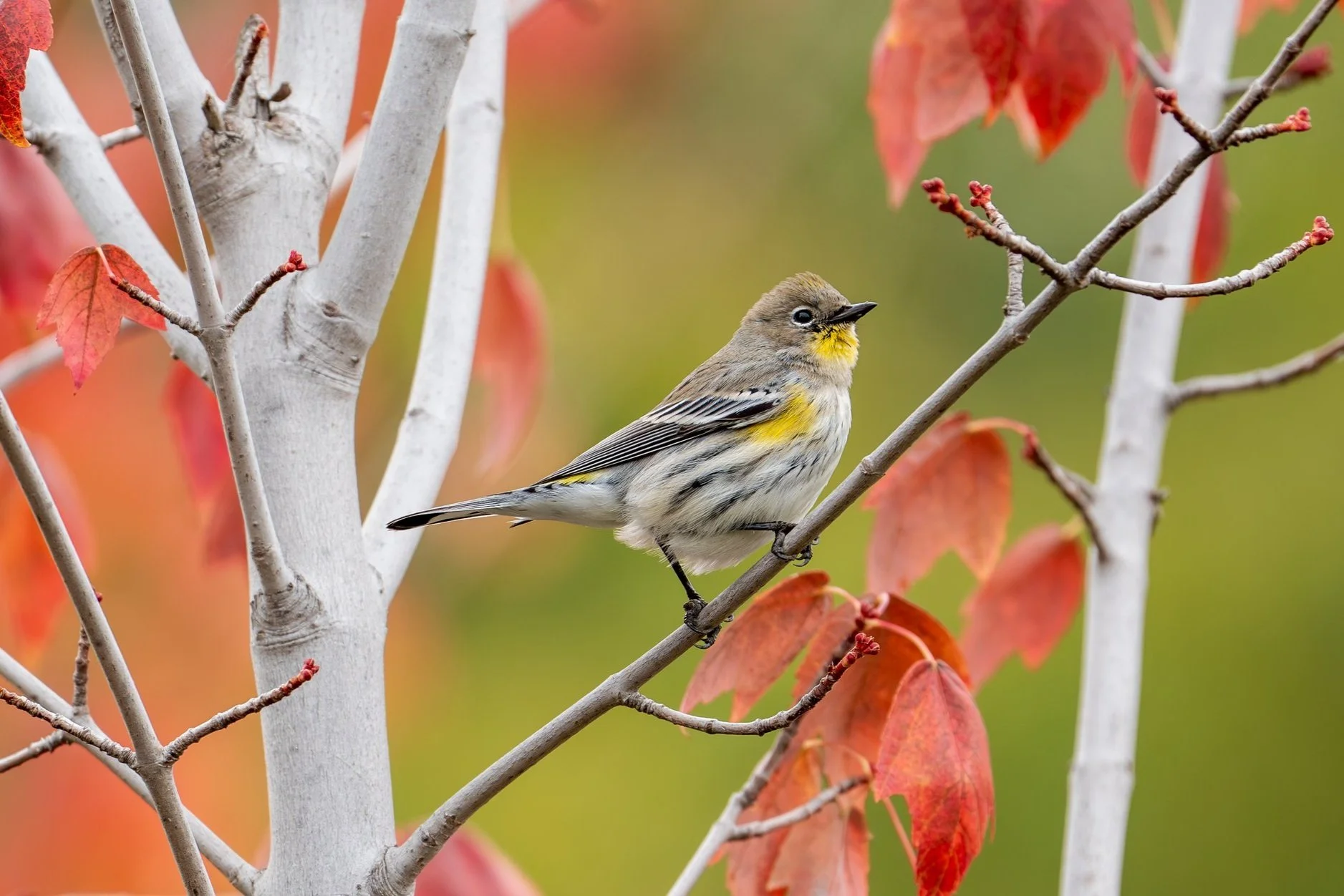




























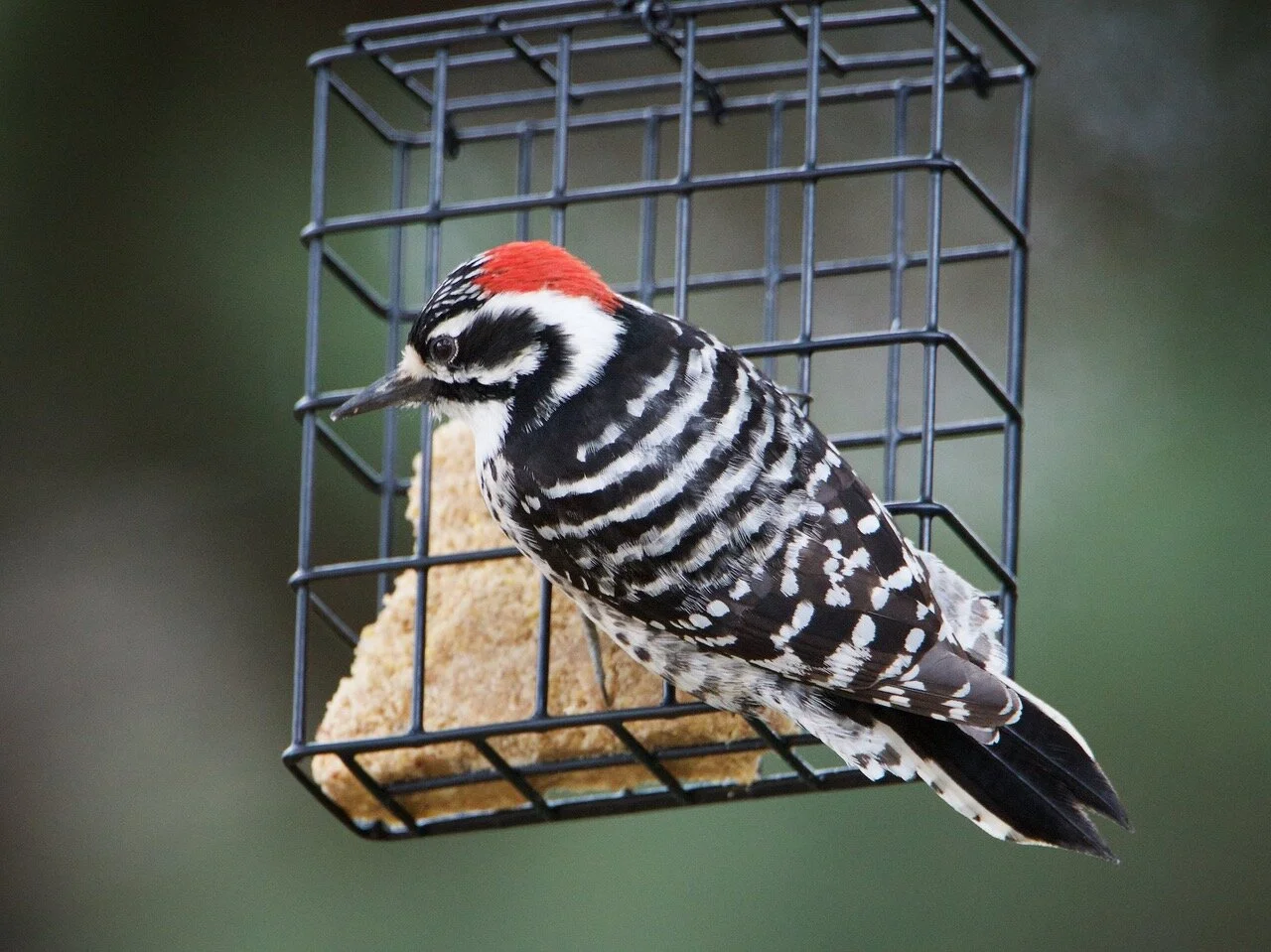
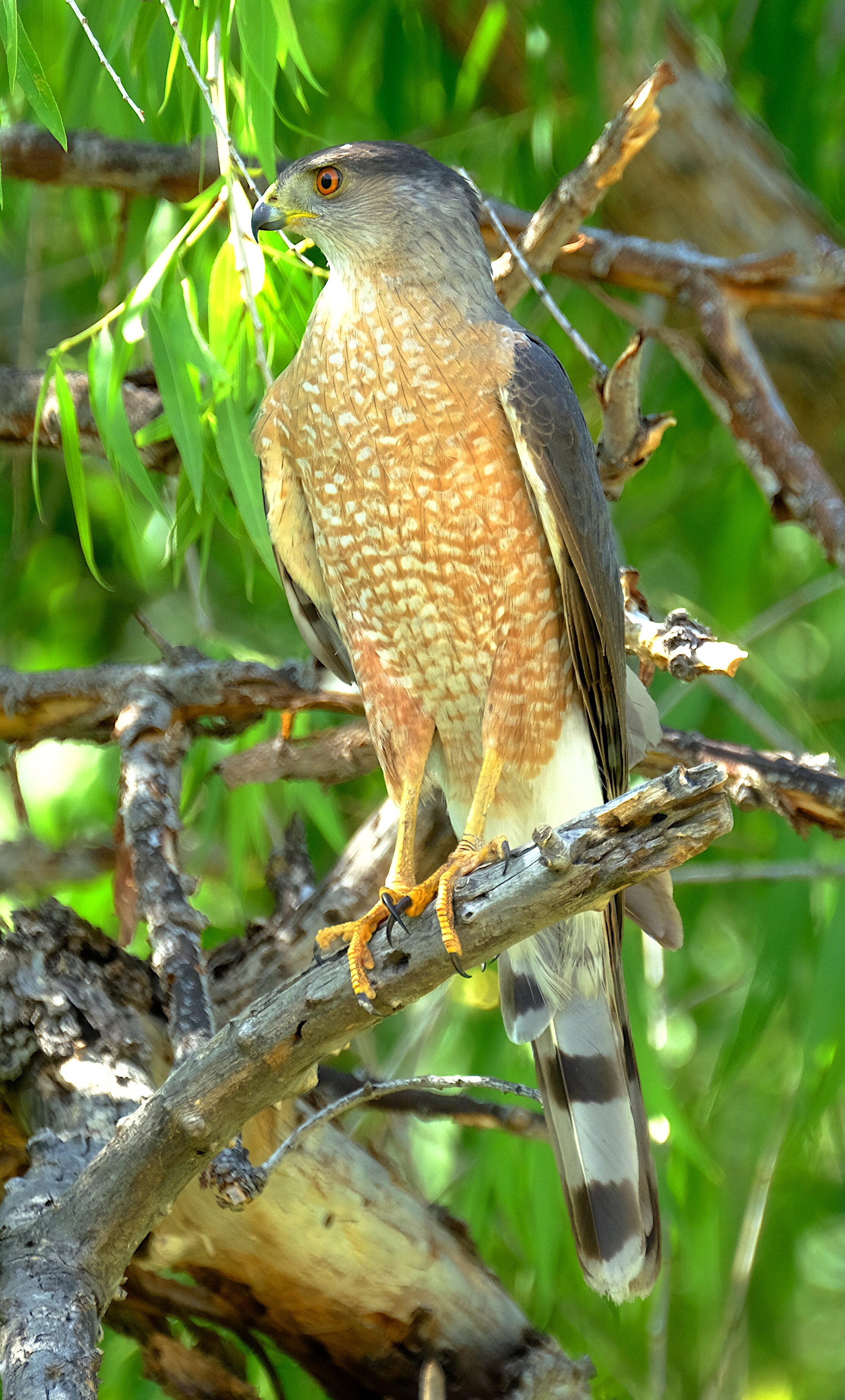

![Juvenile Cooper’s Hawk with Mourning Dove. Note the teardrop shape of the breast streaking and yellow iris. Photo by Dave Zittin]](https://images.squarespace-cdn.com/content/v1/5cc8aba2755be21f06ea88af/1610389534806-X0PXS9UHBZ12THU70ST6/Cooper%27s+Hawk+immature+with+Prey+1+dave+zittin.JPG)




